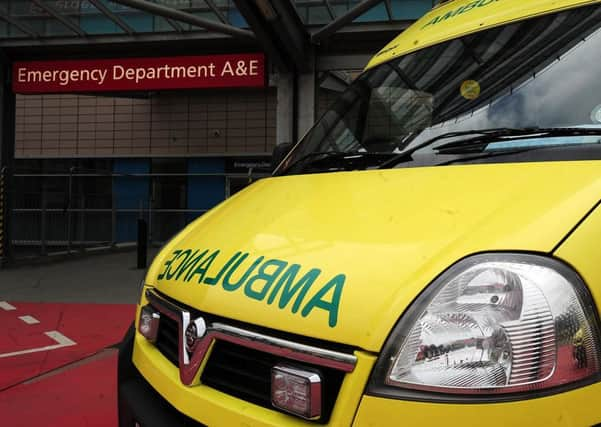Emergency departments are on the '˜hit list'


Blackpool Victoria Hospital has escaped the ‘hit list’ drawn up Health Service Journal of A&E units it thinks are at risk of being either closed or downgraded under radical new plans to reform the NHS.
But Chorley and South Ribble Hospital’s A&E has been named as being an ‘amber’ risk, along with Southport and Formby Hospital.
Advertisement
Hide AdAdvertisement
Hide AdBosses at Lancashire Teaching Hospitals Trust said: “Currently there is no proposal to reduce either the number of hospitals or emergency departments in this area.”
NHS bosses who have drawn up the changes as part of efforts to plug a £22bn hole in the health service budget by 2021, insist that concentration of specialist urgent services could save lives and there are no plans for a “significant” reduction in the existing number of 175 emergency units across the UK.
But one senior emergency doctor has warned the plans amount to proposals to “make the River Nile run backwards” by planning for a reduction in demand for A&E services at a time when Britain has a growing and ageing population.
Research by the Johnston Press Investigation Unit based on 44 regional blueprints reveals that managers are planning to cater for up to 30 per cent fewer A&E visits and plans have already been advanced to downgrade units to urgent care centres with fewer specialist or consultant-grade staff.
Advertisement
Hide AdAdvertisement
Hide AdDr Chris Moulton, vice president of the Royal College of Emergency Medicine said: “A&E units are already desperately short of capacity and hospitals have almost 100 per cent bed occupancy.
“The suggestion that you can close A&E departments and then somehow fewer people will become ill is clearly ridiculous.
“And anyway, it is not people with minor illnesses but elderly patients with serious conditions who are the ones lying on A&E trolleys waiting for beds and then languishing on the wards awaiting social care.
“We have a rapidly growing and ageing population and therefore the idea that the health service won’t have to deal with even higher numbers of people requiring emergency care and hospital admission in the future is like hoping that the River Nile will run backwards.”
Advertisement
Hide AdAdvertisement
Hide AdDeborah Harrington, who is on the national executive committee for the National Health Action Party, which campaigns for improvements in health service funding and staffing said: “According to the STPs, to make the NHS affordable and sustainable, we the public must get used to longer ambulance journeys for emergency care, longer waiting times for treatment.
“There is a shortage of doctors and nurses. Our A&Es no longer have a mid-winter crisis, they have a year-round crisis.
“But apparently a ‘magic wand’ will make us all so healthy that we will no longer need services or hospital beds.”
An NHS England spokesman said: “The number of people seeking urgent care is on the rise so overall we expect the range of services available to them to expand over coming years.
Advertisement
Hide AdAdvertisement
Hide Ad“Within that overall expansion, it may be possible to improve care and save lives with some concentration of specialist urgent services.
“This approach has increased the chances of surviving a major trauma in this country by 50 per cent, and only today the Stroke Association have called for more concentration of stroke units to improve outcomes.
“However we do not expect significant numbers of A&E changes in the years ahead, and many schemes were in fact decided on many years ago so this is a rehash of old news.”
NHS England also pointed out that The Royal College of Emergency Medicine have said that the threat to A&E departments from local transformation plans is “overstated”.
Advertisement
Hide AdAdvertisement
Hide AdNHS England has been clear that every STP area must fully discuss their plans with the communities they serve.
£1.8 billion of funding in the Sustainability and Transformation Fund has been provided to support providers improving performance, particularly in A&E, and balancing the books as they plan for the future.
Read more here: